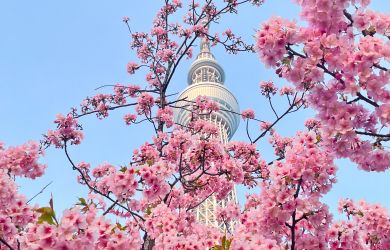
November 12, 2009
Beyond the Blossoming Fields
Originally published on metropolis.co.jp on November 2009 Late last month, the World Economic Forum released its annual Global Gender Gap Index, which ranks countries on how equitably they divide resources and opportunities between men and women. While Iceland topped the list, closely followed by the rest of Scandinavia, Japan placed a dismal 75th—an improvement on […]
By Metropolis
Originally published on metropolis.co.jp on November 2009
Late last month, the World Economic Forum released its annual Global Gender Gap Index, which ranks countries on how equitably they divide resources and opportunities between men and women. While Iceland topped the list, closely followed by the rest of Scandinavia, Japan placed a dismal 75th—an improvement on the previous year, but still no match for China, Mongolia or Uzbekistan.
This came only a few months after a report by the UN Committee on the Elimination of Discrimination against Women criticized Japan on a number of counts, including “the lack of a definition of discrimination… the discriminatory provisions in the Civil Code… the situation of women in the labour market and the wage discrimination women face, and the low representation of women in high-level elected bodies.”
Given the continued existence of such problems, it’s difficult to fathom what life must have been like for Ginko Ogino, who in 1885 became Japan’s first certified female doctor. Her story provides the basis for Junichi Watanabe’s staid 1970 novel Beyond the Blossoming Fields, which has finally appeared in English translation thanks to the government-initiated Japanese Literature Publishing Project.
Born the youngest daughter of a wealthy Saitama family, the beautiful and fiercely intelligent Ogino seemed destined for a life of domesticity when she was married off at the age of 16. However, after contracting gonorrhea from her husband, she returned to her hometown and the couple subsequently divorced.
She would find her calling while receiving treatment from one of the country’s top physicians at a hospital in Tokyo in 1870. Subjected to a series of humiliating physical examinations, Ogino became determined to save other women the same experience by becoming a doctor herself.
It would take her 15 years to achieve this goal, during which time she was effectively disowned by her family and had to surmount numerous institutional hurdles. The Meiji Restoration took a long time to yield practical benefits for Japanese women, not least proper access to education. Ogino had to fight hard merely to be allowed to attend medical school, and, once admitted, was subjected to appalling discrimination from her fellow (exclusively male) students. Following her graduation, she was repeatedly refused permission to take the medical licensing exams, based simply on a lack of precedent.
After finally succeeding in her goal, Ogino’s life continued to take a number of interesting turns. She converted to Christianity in late 1885, attracted in part by its advocacy of social change, and became an influential proponent of women’s rights as a member of the Japan Christian Women’s Organization. “If things had continued as they were,” Watanabe observes, “she would surely have been one of the most famous figures of the Meiji era.”
It wasn’t to be, though. Instead, she married Yukiyoshi Shikata, an idealistic student 13 years her junior, and later closed her Tokyo clinic to join him in establishing an ill-fated Christian community in Hokkaido. When she finally returned to her career in medicine, she discovered that she had been left behind by the pace of change, her hard-earned skills now outdated: a pioneer reduced to an irrelevancy.
Watanabe recounts this tale with a fine attention to detail but little sense of drama. It’s hard to tell what attracted him to the story in the first place, as he appears forever unsure what to make of Ogino, keeping her at arm’s length with flat, simplistic characterization. Only when his strait-laced heroine wrestles with her feelings for her husband-to-be does the narrative really come alive; otherwise, Beyond the Blossoming Fields has the ponderous, too-worthy feel of a TV biopic. Though the book sold over a million copies in its Japanese edition, it’s a work of historical rather than literary interest: a fascinating real-life story rendered curiously banal.







